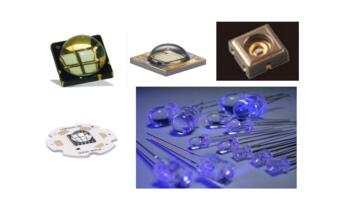Principle of UVLED sterilization
UVLED sterilization is through UVLED irradiation, using appropriate wavelength of UVLED can destroy the molecular structure of DNA (deoxyribonucleic acid) or RNA (ribonucleic acid) in microbial cells, resulting in growth cell death and (or) regenerative cell death, so as to achieve the effect of sterilization and disinfection. Generally, the effective wavelength range of traditional UVLED sterilization can be divided into four different bands: UVA (400315nm), UVB (315280nm), UVC (280200nm) and vacuum UVLED (200loonm). Because C-band UVLED is easy to be absorbed by the DNA of organism, especially the UVLED of 253.7nm is the best. UVLED is a kind of pure light source. The light emitted by UV LED germicidal lamp can be absorbed by organisms to achieve the best sterilization effect.

UVLED can kill microorganisms by radiation damage and destroy the function of nucleic acid, so as to achieve the purpose of disinfection. The effect of UVLED on nucleic acid can lead to the breaking of bonds and chains, crosslinking between strands and the formation of photochemical products, which changes the biological activity of DNA and makes the microorganism unable to replicate itself. This kind of UVLED damage is also lethal.
Zhang Hao: evaluation and application of UVA led photocatalysis technology for air sterilization and disinfection
Industry News · February 15, 2020 · 1942 views
[video tutorial] deep design of deep UV uvc-led sterilization scheme
Technical Sharing · February 11, 2020 · 1604 views
Group company UVLEDTEK was selected as a national specialized and new "small giant" enterprise
Company News · August 16, 2022 · 487 views
Good News | Warmly Celebrating Our Company's Dr. Chen Jingwen's Selection into the "China Optics Valley 3551 Talent Plan"
Company News · June 28, 2023 · 659 views
Warmly welcome Professor Sun Xiaowei, Professor Sun Haiding, Associate Professor Wang Kai and their delegation to visit Shenzhen purple science and technology investigation and handover
Company News · November 18, 2018 · 994 views
The air humidifier used by every family may be the culprit of pneumonia. How to avoid causing pneumonia
Industry News · January 6, 2020 · 396 views
Biological safety of 222 nm lamp for sterilization
Industry News · December 19, 2020 · 2549 views
Novel coronavirus UVC to be launched by us Airport
Industry News · January 31, 2020 · 613 views
